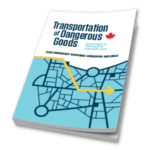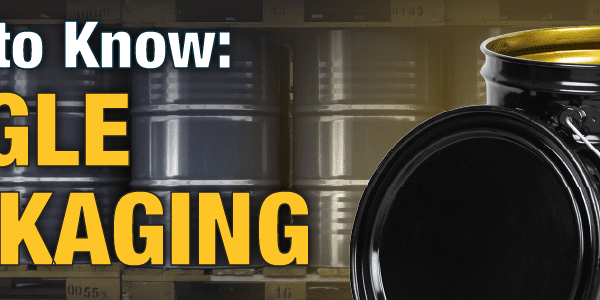
Hello, everyone! We’re back with a blog that we hope will keep you updated on what’s happening with the Canadian TDG regulations.
This blog will discuss safety standards and what they apply to according to TDG.
The safety standards that are to be used as a benchmark for safely transporting dangerous goods are a key aspect of the TDG regulations.
Its standards are listed in Part 1 of the TDG and are found in section 1.3.1. The main problem I encounter in the industry is that a large number of people don’t know how these work, let alone which one(s) apply to their operations.
Adding to the complexity, these standards are found throughout TDG since whenever the term container is used, it always refers to a particular standard.
The basic rule is the selection and use of the right container, for the right product, for the right transport, for the right quantity, for the right degree of danger, and in compliance with the applicable standard.
There are 38 TDG safety standards, and many of these standards reference other standards. These are part of the TDG but appear in it by reference only. You will then have to search for and obtain the standard(s) that apply to you.
The standards are found in large families, such as ASTM (International, formerly American Society for Testing and Materials), CGA (Compressed Gas Association), CGSB (Canadian General Standards Board), CSA (Canadian Standards Association), ISO (International Organization for Standardization), OECD (Organisation for Economic Co-operation, and Development), TP (Transport Canada Standard), ULC (Underwriters’ Laboratories of Canada), and of course the standards according to the UN recommendations.
These standards may establish rules for manufacture, use, requalification, testing, transport, loading and unloading, quantity limits, closure guidelines, etc.
Of course, each of these refers to an applicable type of container and/or mode of transport. Some of these standards are nevertheless common, and among them:
- TP14877 which relates to the design, manufacture, maintenance, and qualification of tank cars and one-ton containers and the selection and use of large containers or transport units used for the handling, offering for transport, or transporting by rail of dangerous goods in Classes 2, 3, 4, 5, 8, 9 and Division 6.1.
- TP14850 which concerns containers for the transport of dangerous goods in classes 3, 4, 5, 6.1, 8, and 9 (it should be noted that this standard will soon be updated and converted to the CGSB-43.150 2020 standard)
Note: This standard provides guidelines for the preparation of small containers by stipulating the type of containers that are permitted to contain the HM, the maximum quantity per container, general requirements taking into consideration liquids, absorbent materials, cushioning, etc. The standard also includes exemptions related to the disposal of certain inner packaging types as residual hazardous materials. - CGSB-43.125 which covers packaging for Category A and Category B (Class 6.2) infectious substances and hospital, medical, or bio-waste
Note: This standard provides guidelines for the preparation of small containers by stipulating the type of inner containers that are allowed to contain infectious materials, the maximum quantity per inner container, the general requirements taking into consideration liquids, absorbent materials, cushioning, dry ice, etc. - CGSB-43.146 which relates to the design, manufacture, and use of intermediate bulk containers for the transport of dangerous goods of classes 3, 4, 5, 6.1, 8, and 9
- CGSB-43.126 which relates to Reconditioning, rebuilding, and repair of drums for the transportation of dangerous goods
In conclusion, in light of all the applicable standards in the TDG regulations, it is very important to ensure that your operations take them into consideration. Therefore, an in-depth analysis is required in order to properly define the procedures to be implemented. They guarantee transport safety and, by the same token, public safety, not to mention compliance with the TDG regulations.
Don’t forget that ICC’s team of Regulatory Experts is always here for you if you have any questions about our blog posts or any other TDG-related issues whether it involves our multiple products, services, or training.
Stay up to date and sign up for our newsletter!
We have all the products, services and training you need to ensure your staff is properly trained and informed.
 Shipping Dangerous Goods by Ground in Canada Training Courses |
 Canadian TDG Publications |






 ICC USA
ICC USA ICC Canada
ICC Canada